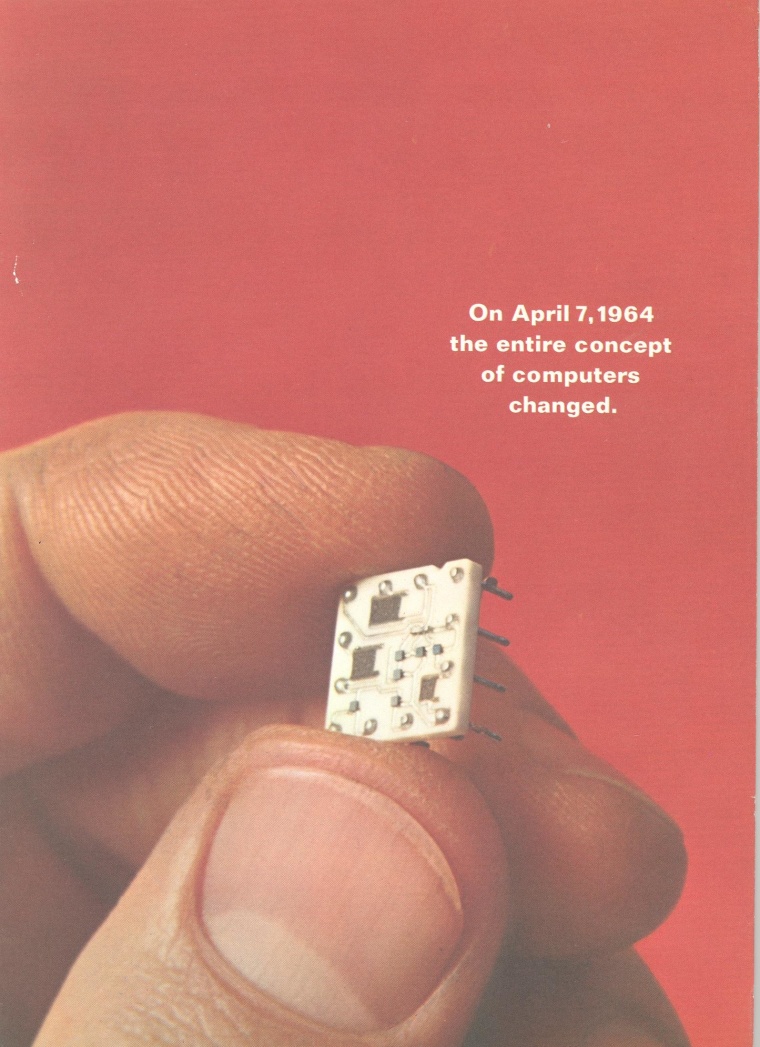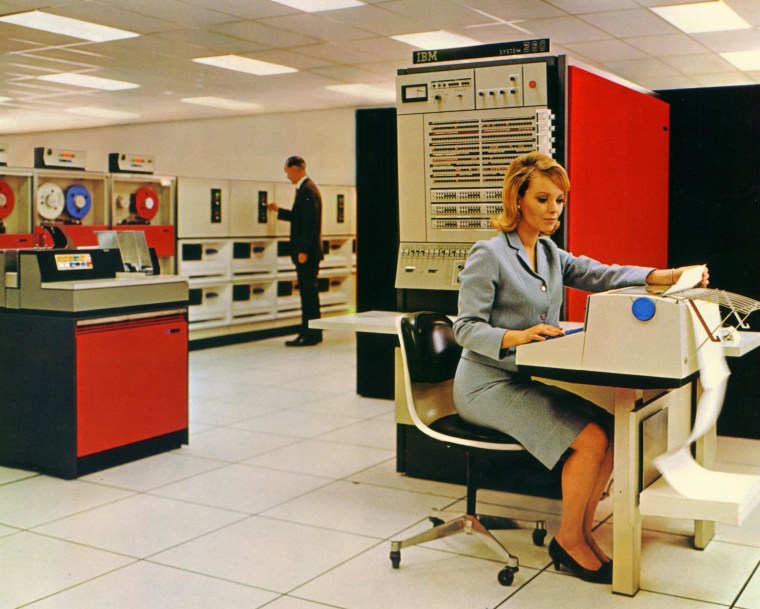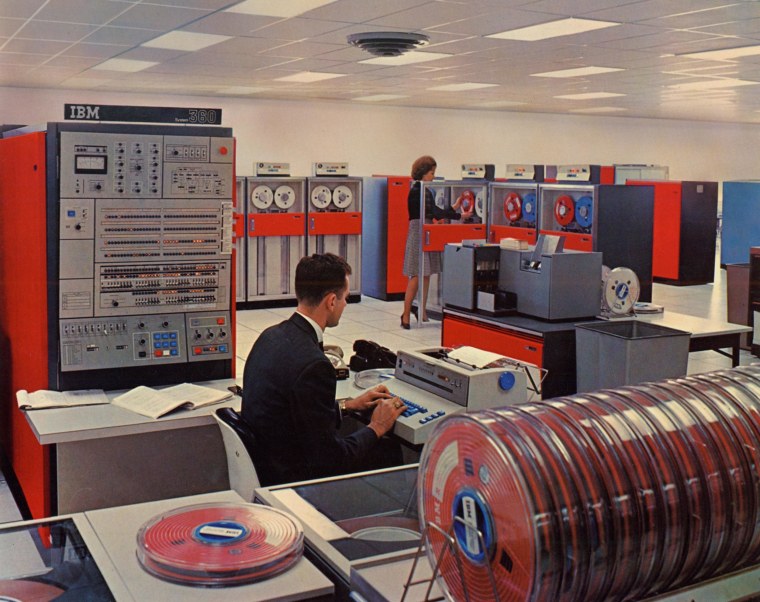The commotion kicked up by the new super computer at "Mad Men" advertising agency SC&P is nothing compared to the havoc it wreaked at IBM after it was announced on April 7, 1964 -- 50 years before its AMC debut.
The IBM System 360 led the computer revolution. "Mad Men" designers spent two days at the Computer History Museum in Mountain View, Calif., sketching the real thing to get it exactly right. What's the big deal? Museum curator Dag Spicer gave us the the true story about "Mad Men's" newest featured player.

The IBM 360 really did change everything
Clever TV critics point to the "2001: Space Odyssey" allusions hidden throughout the "Mad Men" episode featuring the IBM 360 debut -- plunked right in the middle of SC&P's "creative lounge." But unlike the monolith which confronts apes in Stanley Kubrick's masterpiece, the room-sized computer is more than just a metaphor for epochal change. As Don Draper says to Harry Crane, “In fact it’s quite literal.”
Spicer confirms, "It was a massive disruption for IBM and computing, and the biggest development project the company has ever taken on, before or since."
The IBM 360 is the first computer able to upgrade
Marketed to serve every degree of industry, "the IBM 360 was a response to an internal crisis," Spicer says.
Prior to the 360's development, IBM had six or seven mainframe computer lines able to process large amounts of data for either business or science -- just not both. To add to the cost and confusion, each line required its own sales and support team. If a customer wanted to upgrade to a bigger mainframe, the software on the old computer had to be completely rewritten. "It was very confusing for salesmen and too expensive to support," Spicer says.
For the first time, "the IBM 360 allowed customers to upgrade to more powerful models without completely rebuilding the system."

The IBM 360 cost more $5 billion to develop -- half the cost of the atomic bomb
Creating a computer revolution didn't come cheap. IBM originally budgeted approximately $2 million for the project, (approximately $15 million today) but "by they time they finished, it was more than $5 billion," Spicer says. That's $5 billion in 1960s money. "Dr. Richard Tedlow (Harvard Business School) compares it to Google spending $300 billion on a project today," Spicer says. He adds that "The Manhattan Project cost between $8 and $10 billion." From soup to nuts, the IBM 360 cost half as much as the atomic bomb.
The IBM 360 backstory has more drama than "Mad Men"
To invent the computer of the future, IBM resorted to building its own parts. This turned the company into a components manufacturer, which even shareholders failed to appreciate at the time. As costs continued to climb, Thomas J. Watson, Jr., (the second IBM president after his father) demoted his brother Dick and put Vin Learson in charge of the project. Spicer (and history) describes Learson as "a temperamentally nasty guy ... which you have to be at that level." Learson, Spicer says, "terrorized senior management, not to mention everyone else." And he got the job done.
But life ended tragically for Watson's brother. "It was sad," Spicer says. "Dick Watson was a heavy alcoholic, and he had real problems. He eventually died falling down a staircase and breaking his neck."
"We remade the computer industry with the System 360, and objectively it was the greatest triumph of my business career," Watson. said years later. "But whenever I think of it, I think about the brother I injured."

The IBM 360 was the "jewel" of the office
In "Mad Men," SC&P gives the IBM 360 the primo spot in the center of the office, just like real businesses did back in the day. "Automation was the buzzword at the time, so businesses wanted everyone to know they were adopting the latest methods and keeping up to speed," Spicer says. "Most mainframes were kept in giant glass rooms on raised floors They were displayed like jewels in a jewelry case, to show off to customers."
Once on the market, the IBM 360 didn't come cheap. "The models cost around $2 million, so most businesses rented them for around $20,000." But the price was worth it. "The IBM 360 was a major status symbol."
Learn more about the drama behind the IBM 360 in CORE, the Computer History Museum's annual magazine.
